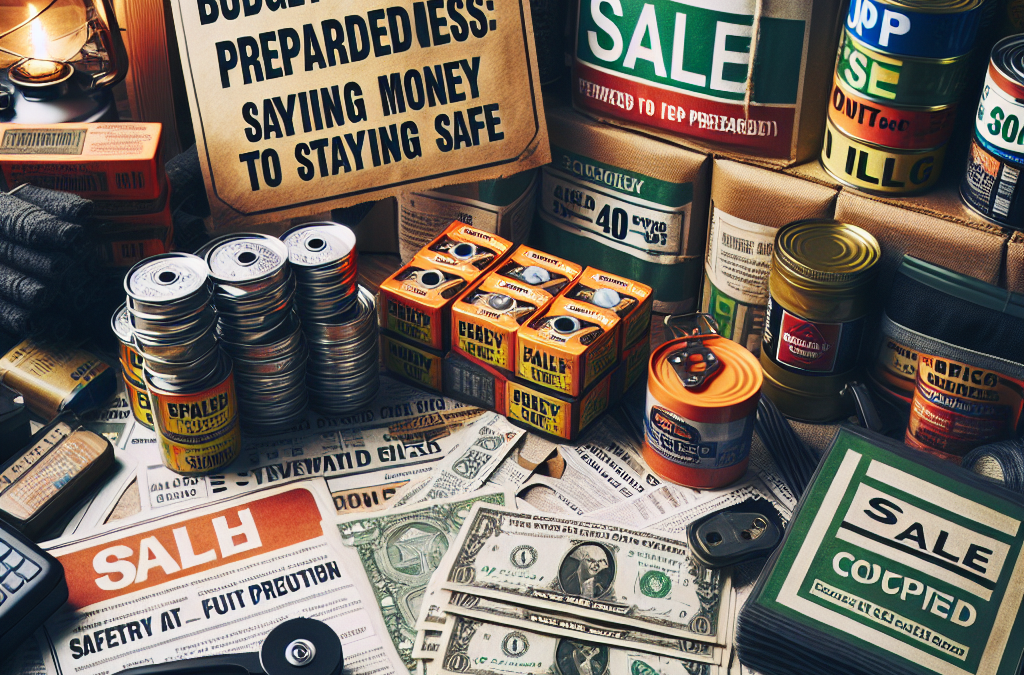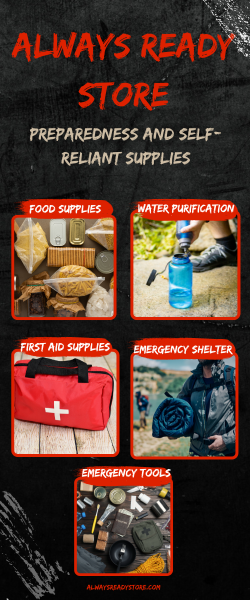Creating a Solid Emergency Kit
Gathering Essential Supplies
When it comes to putting together an emergency kit, it’s all about the essentials. I remember when I started my own kit, it felt overwhelming at first. But, I learned that it’s all about having the right items that could really make a difference during a crisis. Basic things like water, non-perishable food, and first-aid supplies are crucial. Start with a checklist and make sure you don’t forget anything important!
You don’t have to buy everything brand new, either. You can often find items around the house or at thrift stores. I found a good flashlight in my garage—I just needed to buy fresh batteries. Getting creative with what you already have is not only budget-friendly but also quite satisfying.
Lastly, consider the size of your family when putting together your kit. You’ll want to ensure it can last for everyone, especially if you live in a more rural area. Customizing your kit to your specific needs will help keep costs down while being well-prepared.
Storing Your Supplies Wisely
Once you’ve gathered your supplies, the next crucial step is finding the right storage solution. Rather than buying expensive containers, I’ve repurposed old bins and shelves from around my home. It’s really about being resourceful and sensible with your space while keeping things organized and easy to access.
Labeling isn’t just for organization, it’s a lifesaver during emergencies. I labeled my bins according to their contents and it has saved me so much time when I need to grab something quickly. Remember, in a high-pressure situation, you’ll appreciate having everything at your fingertips.
Also, regularly check your kit to ensure everything is in working order. I set a reminder to do this every six months, and trust me, it gets easier with time! This not only keeps supplies fresh but guarantees that nothing questionable sneaks in.
Thank you for reading this post, don't forget to subscribe NOW for FREE!
Maintaining Your Kit on a Budget
One of the best tips I’ve learned is to keep a close eye on sales and bulk prices throughout the year. When canned goods go on sale, load up! It’s an easy and budget-friendly way to ensure you have enough supplies without breaking the bank.
Don’t forget to use coupons! It may seem old-fashioned, but I have snagged some excellent deals just by taking the time to look for discounts. Combine that with weekly sales, and you’ll likely save a bundle next time you stock up.
Finally, connect with friends or neighbors to pool resources. Maybe you can share bulk purchases or trade items. I’ve found that working together not only helps keep everyone prepared but also adds a fun community aspect to the whole process!
Planning for Communication During Emergencies
Establishing Communication Plans
Creating a communication plan was one of the first things I did after setting up my kit. It’s crucial to have a clear understanding of how my family would reach each other during an emergency. We designated a meeting spot and agreed on contacts we would check in with.
I used to think this was just common sense, but I realized how often people overlook this vital detail. Write down all necessary contact info and keep a copy in your emergency kit. This simple step could save you a lot of stress later!
Make sure everyone is on the same page: practice your plan together. This initiative kept my family informed and ready. The more comfortable you become with your plan, the better prepared you will be in a real crisis.
Utilizing Technology
These days, there are tons of apps designed for emergency preparedness. My favorite one sends alerts based on my location for severe weather warnings! It’s free, and it helps me stay informed without any extra hassle.
However, I’ve also made non-digital plans just in case the worst happens—like power outages or losing service. Making physical note cards with critical information and keeping them with my emergency kit has been a lifesaver a few times!
Technology may fail us, but having multiple ways to communicate keeps me feeling secure. Being proactive is key in maintaining peace of mind, especially when unexpected situations arise.
Staying Informed and Up-to-Date
Knowledge truly is power. I stayed in touch with local news stations and weather updates to understand what possible risks I may face in my area. This habit keeps me prepared without spending a dime.
I also recommend following social media accounts from local emergency agencies. They’re great for finding the latest safety tips and alerts in real-time. I love that it keeps my community connected and informed.
Ongoing learning about preparedness techniques is vital. I frequently attend community workshops (many are free!) that provide insights into how we can be more prepared while staying budget-friendly. Don’t underestimate the power of shared knowledge!
Food Security Tips
Growing Your Own Food
One of the best things I’ve done for preparedness and my wallet is starting a small vegetable garden. Even just a few herbs can make a world of difference. It’s really satisfying to grow your own food while saving money on groceries!
You don’t need a big backyard, either. If space is tight, I’ve seen successful container gardens on balconies and porches. Consider what you use most often in your cooking, and start there!
Not only does gardening help with food security, but it’s also an excellent way to connect with nature. It has helped me unwind and appreciate my surroundings much more. Give it a shot, and you may find it’s not just cost-effective but also therapeutic.
Using Preserved Foods
Learning to preserve food has been an invaluable addition to my preparedness routine. I’ve tried canning and dehydrating, which helped stretch our food supply significantly. On top of that, it opens the door to trying new recipes!
When you take advantage of in-season produce, you can save a ton while stocking up for the future. I like to visit local farmers’ markets, where I typically find great deals on bulk items to preserve. Getting to know local farmers has been a bonus; they often share tasty tips!
Preserved foods last a long time, giving us peace of mind knowing we can rely on them in tough times. I feel like I’m also giving a little back by supporting local agriculture, and finding joy in the process itself!
Budgeting for Food Needs
A key element of budgeting for food preparedness is keeping track of what you spend. I started utilizing simple spreadsheets to organize my purchases and pinpoint areas where I could cut back. It feels empowering to watch my savings grow!
Utilizing a meal-planning strategy has been transformative. I now plan meals around sales and what I have stockpiled, which helps eliminate waste and saves money. It’s like a game, figuring out how to create delicious meals that fit my budget!
Regularly reassessing your needs and planning accordingly is crucial. This allows you to stay under budget while stocking up on essentials. I’ve learned that preparedness doesn’t have to be an expensive endeavor; it really just requires time and creativity.
Understanding Local Resources
Identifying Community Support Services
One of the first things I did was research the support services in my community. Local organizations often have resources available for emergency preparedness, including training and assistance.
Don’t hesitate to reach out and ask questions. I found that local fire departments provide free classes on preparedness and safety. Getting educated has not only helped me save money but expanded my network.
These resources are usually underutilized, so don’t wait until an emergency arises to understand what’s available to you. Getting involved now is great for building a relationship with your community!
Joining Local Preparedness Groups
Thanks to social media, I found a group of like-minded folks interested in preparedness right in my area. It’s amazing how much we can learn from each other’s experiences, and often, these communities are incredibly supportive.
Being part of a group helps me stay motivated and accountable. We come together for training sessions, share resources, and brainstorm new ideas on how to be better prepared. More brains are always better than one!
Plus, it’s heartwarming to become part of a tight-knit community that genuinely cares for one another’s safety. I’ve made several friendships through these gatherings, and it’s incredible how shared knowledge can enhance our collective security.
Volunteering and Giving Back
Lastly, I’ve learned that helping out in the community fosters a spirit of preparedness. Volunteering with local disaster relief organizations not only bolsters my skills but also strengthens connections with my neighbors.
This experience has opened my eyes to the challenges many face in emergency situations. Giving back not only helps others but has enriched my understanding of how to be a better-prepared individual. It’s a win-win!
Being part of something bigger than myself has been rewarding, reminding me that we are all in this together. I always encourage my friends to get involved—it can truly make a monumental difference.
FAQs About Budget-Friendly Preparedness
1. What items are essential for an emergency kit?
Essential items include water, non-perishable food, a first-aid kit, flashlight, batteries, and any necessary medications. It’s also good to include important documents and comfort items, especially for children.
2. How can I save money while preparing my emergency kit?
Start by gathering supplies you already have at home or buy from discount stores. Watch for sales and use coupons for bulk purchases. You can also swap items with friends or family to save more.
3. What should I consider when creating communication plans?
Establish clear contacts and meeting places for your family. Keep a copy of contact information in your kit and practice regularly to ensure everyone knows the plan and feels confident.
4. How can I grow my own food on a budget?
Start small with herbs or easy-to-grow vegetables. Use containers if you lack outdoor space, repurpose items you already have, and consider joining community gardening efforts to share resources.
5. Why is community involvement important for preparedness?
Being part of community groups helps share resources, learn from one another, and foster teamwork during emergencies. It builds stronger connections and enhances the overall security of everyone involved.






